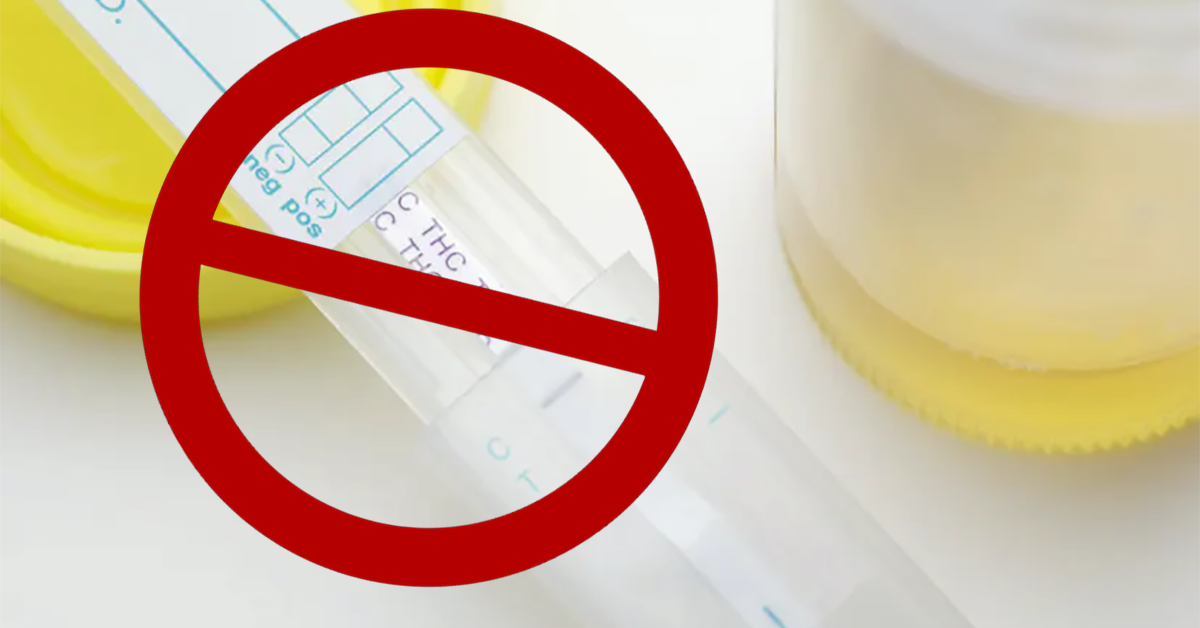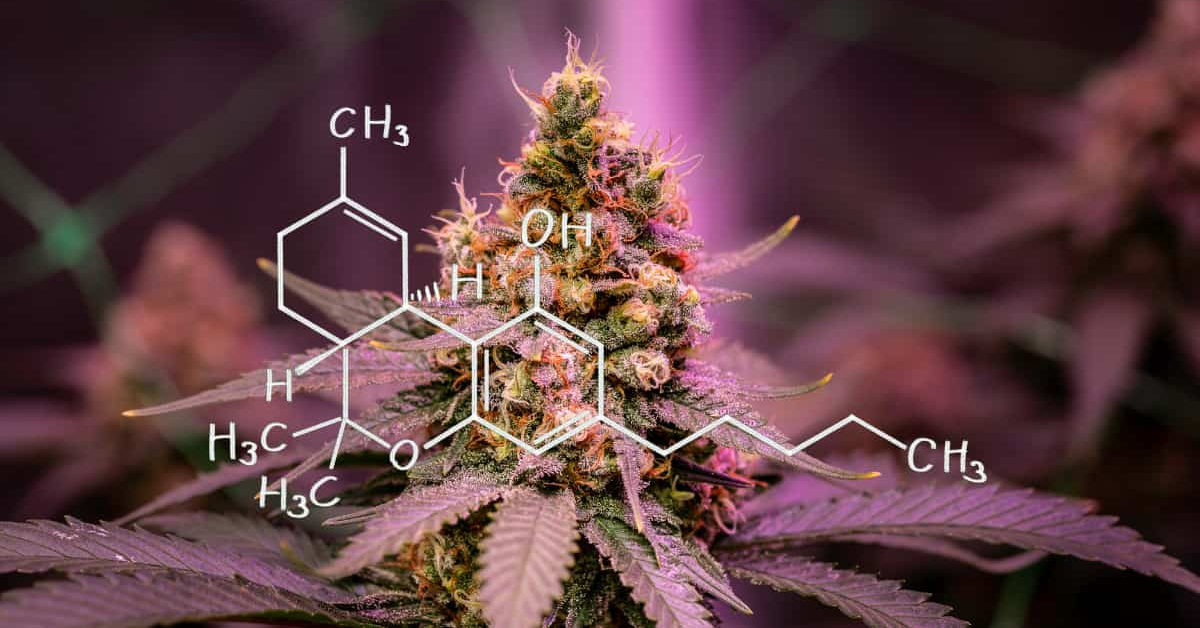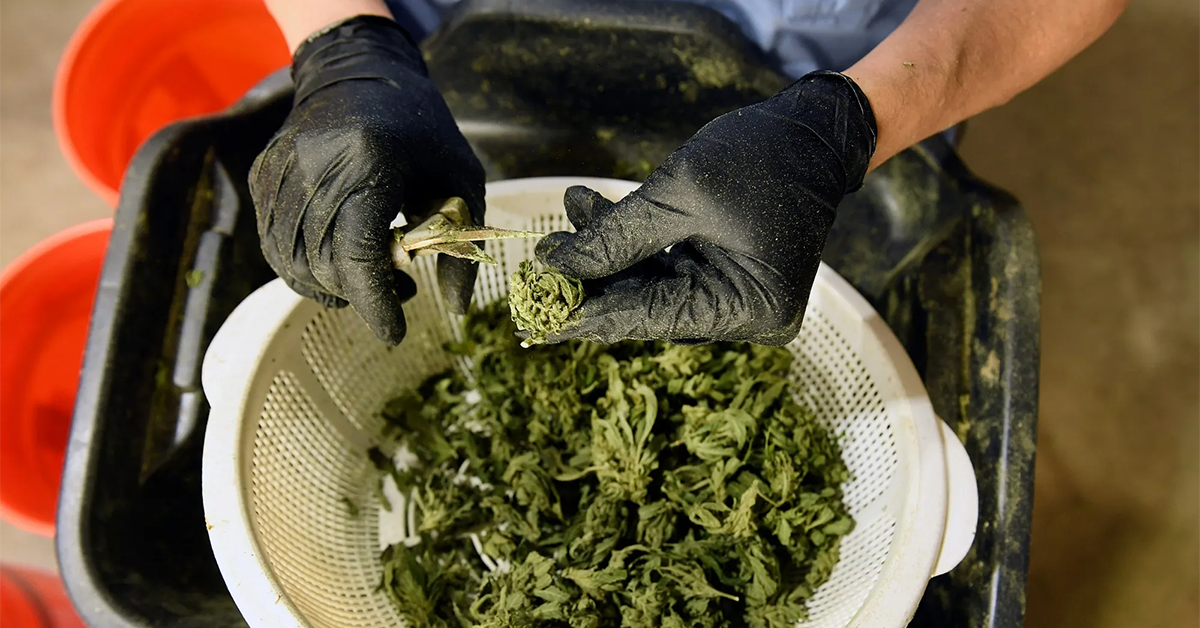The Facts Behind Residual Solvent Levels in Michigan's Cannabis Products

In the realm of cannabis concentrates, misconceptions about the health implications of residual solvents, particularly butane, are widespread. It's crucial to clarify these misunderstandings with factual data and scientific evidence. In Michigan, the regulation for butane in cannabis concentrates is set at a maximum of 800 parts per million (ppm), which translates to 0.08% of the substance. To put this into perspective, in a 1-gram sample of dabs, the highest butane content would be 0.0008 grams. Considering an average-sized dab is about 0.05 grams, this equates to a mere 0.00004 grams of butane per dab, assuming the concentrate is at the upper limit of the legal threshold.
It's worth noting that many producers strive to reduce the butane levels in their products significantly below the maximum limit. Typically, concentrations are brought down to 500 ppm or even less, with several companies aiming to keep them under 300 ppm.
To understand the implications of these figures, let's refer to the National Institutes of Health (NIH) guidelines on butane exposure. According to the NIH, symptoms like drowsiness in humans are observed at butane concentrations of 16,000 mg per cubic meter over a 30-minute period, which is deemed "non-disabling." This level is substantially higher than what is found in cannabis concentrates, requiring direct and concentrated inhalation of butane to achieve such exposure.
Moreover, when comparing the inhalation of butane from using a lighter to spark cannabis to that from consuming a dab, the latter represents a significantly lower exposure, even with larger dab sizes.
Delving further into the mathematics of butane exposure through dabbing, let's assume a concentrate with the maximum allowed butane level of 800 ppm. To reach even the lower threshold of acute butane exposure, one would need to consume an unrealistic amount of 10,000 grams of such dabs within 30 minutes. This quantity is far beyond typical consumption patterns and highlights the safety of these regulated levels.
In comparison, Michigan's regulation is stringent, especially when juxtaposed with other states like Oregon, where the limit is set at 5,000 ppm. While there may be debate over the ideal limit, Michigan's standard of less than 1,000 ppm appears to be well within a safe and reasonable range, ensuring consumer safety without compromising product quality.
First Recorded Occupational Asthma Fatality in U.S. Cannabis Industry Occurs in Massachusetts

Before we delve into the article, we want to address our Michigan readers directly. While the incident reported below occurred in Massachusetts, we believe it carries significant relevance for everyone involved in the cannabis industry, including those in Michigan. The tragic event serves as a crucial reminder of the potential health risks associated with working in this rapidly expanding sector, particularly for individuals with pre-existing respiratory conditions like asthma. It's a poignant warning that highlights the importance of workplace safety and health precautions across the cannabis industry, regardless of state boundaries. With Michigan's burgeoning cannabis market, this story is not just news from another state; it's a vital lesson in ensuring the safety and well-being of our workforce here at home.
The U.S. cannabis industry recently faced a significant tragedy, marking the first reported occupational asthma death. A 27-year-old worker in Massachusetts succumbed to a fatal asthma attack in January 2022, a concerning development highlighted in a federal report released on Thursday. This incident underscores the increasing health risks in the burgeoning U.S. cannabis sector, particularly regarding respiratory conditions like asthma, exacerbated by the rapid growth following state-level legalizations.
The federal report, emphasizing missed prevention opportunities, noted the critical need for enhanced workplace exposure management, medical surveillance, and adherence to established asthma guidelines in the cannabis industry. The importance of promptly addressing new or worsening asthma symptoms among workers in cannabis facilities was stressed as a key measure to avoid similar tragedies.
This case was detailed in a report by the U.S. Centers for Disease Control and Prevention, encapsulating the findings from a federal Occupational Safety and Health Administration (OSHA) inspection. The investigation encompassed a thorough worksite exposure assessment, interviews with coworkers and next of kin, medical record analysis, and collaboration with the Massachusetts Department of Public Health.
While the report doesn't reveal the identity of the worker or the facility, OSHA filings from last year indicated that an employee at Trulieve's Holyoke location, identified as Lorna McMurrey, 27, suffered a fatal asthma attack while packaging cannabis pre-rolls.
Studies cited in the report identify multiple respiratory hazards in cannabis cultivation and production, such as microbial agents, plant allergens, and chemicals including pesticides. The cannabis plant itself can pose specific allergenic risks.
The incident comes amid a surge in recreational marijuana legalization across the U.S., with almost half the states now permitting adult recreational use. This growth has sparked calls for enhanced safety measures in the marijuana industry, ensuring the protection of workers and the public.
Scott Gagnon, a Maine-based cannabis industry watchdog, views this incident as a crucial warning for lawmakers to implement stricter regulations around the cannabis industry. Conversely, Paul Armentano, deputy director of NORML, asserts that the cannabis industry aims for utmost safety, stressing that such incidents are less likely in regulated environments where businesses adhere to standard workplace safety regulations.
VBJG Mt. Clemens, LLC Announces Recall of Cannabis Apple Cider in Michigan

In a crucial update for the Michigan cannabis community, VBJG Mt. Clemens, LLC (AU-P-000368) has initiated a voluntary recall of a specific marijuana-infused beverage product. This action, taken in collaboration with the Cannabis Regulatory Agency (CRA), is part of a broader commitment to public health and safety within the state's burgeoning cannabis industry.
Recall Details
The recall concerns a particular batch of the Armada Cannabis Co. Cannabis Apple Cider, which contains 20mg of cannabis. This product, unfortunately, did not meet the necessary production compliance standards. The issue primarily revolves around the absence of a critical ingredient required to maintain shelf stability. The consequence of this oversight has been the swelling and bursting of cans, posing a potential safety risk.
Distribution and Identification
This recalled product was distributed between October 11th, 2023, and November 1st, 2023, and is identified by an expiration date of January 2nd, 2024. To assist consumers in identifying the affected products, further details include:
- A production date of October 2nd, 2023
- An expiration date of January 2nd, 2024
- A specific Source code (SRC): 1A40503000373FD000009667
Safety Precautions and Disposal
Consumers who have purchased this product are strongly advised not to consume it. Given the risk of can expansion or bursting, it is recommended that these products be disposed of in an outdoor receptacle. It is important to note that these items should not be returned to the point of sale.
Retailers involved in the sale of these products are required to prominently display the recall notice for 30 days, ensuring that all consumers are adequately informed.
Reporting and Consumer Guidance
If consumers experience any adverse reactions after using these products, they should immediately report their symptoms to healthcare providers. Additionally, such incidents can be reported to the CRA by completing an Adverse Reaction Form available on their website or via phone at 517-284-8599.
Licensees who become aware of any adverse reactions associated with a marijuana product must also report these incidents to the CRA and log them in the METRC system within one business day.
Inquiries and Additional Information
For any inquiries related to this recall, individuals can contact the CRA's Operations Support Section at [email protected]. The CRA remains committed to ensuring the safety and well-being of Michigan's cannabis consumers and encourages the community to stay informed about product safety and regulatory compliance.
For more information about the CRA and its initiatives, please visit www.michigan.gov/CRA.
This recall serves as a reminder of the importance of regulatory compliance and safety in the growing cannabis industry. As the sector continues to evolve, both consumers and businesses must stay vigilant and informed to ensure the health and safety of the community.
Major Drug Test Manufacturer Sidelines Marijuana for Fentanyl Detection

In light of the evolving legal landscape of cannabis across the United States, Psychemedics, a leading manufacturer of drug testing technology, has introduced an innovative screening panel that shifts focus from marijuana detection to identifying the presence of fentanyl and other controlled substances. This strategic pivot addresses the "relentless change and the pressing need to adapt" to the changing drug policies as more states embrace the legalization of cannabis.
The Advanced 5-Panel Drug Screen, as it is named, is poised to revolutionize how organizations ensure the safety and well-being of their workplaces. Psychemedics emphasizes that the updated screening panel places precedence on the critical threat posed by fentanyl, while concurrently enhancing the precision in detecting substances such as cocaine, opioids, PCP, and amphetamines. The company has confirmed that this revamped drug test has received approval from the Food and Drug Administration (FDA).
Psychemedics, established in 1987 and a pioneer in hair testing technology, underscored the necessity for this evolution in a recent press release. The company cited the persistent labor shortage and the transformation of marijuana laws in 49 states as catalysts for this change. Traditional 5-panel drug tests, Psychemedics argued, are outdated and ineffective against the backdrop of today's drug market, particularly in detecting the increasingly prevalent drug, fentanyl.
Brian Hullinger, the President and CEO of Psychemedics, highlighted the dramatic shift in the workplace dynamics between marijuana and fentanyl. He stated that the Advanced 5-Panel has been crafted to bridge this gap and adapt to the changing landscape.
The announcement comes at a time when several legal cannabis states have implemented protections for employees who consume marijuana during their personal time. These laws prevent employers from taking punitive actions related to state-approved cannabis use. For instance, California and Michigan have recently passed policies that restrict employers from inquiring about or conducting pre-employment drug tests for marijuana use, respectively. Similarly, Washington State and Nevada have enacted legislation to prevent employment discrimination based on lawful marijuana use.
At the federal level, efforts to cease drug testing for marijuana among federal job applicants have faced obstacles, particularly in the House Rules Committee. Conversely, the Senate passed a defense bill in July, including provisions preventing intelligence agencies from denying security clearances based solely on past marijuana use. Additionally, a bipartisan bill was passed last month by the House Oversight and Accountability Committee, aiming to eliminate federal employment or security clearance denials based on past cannabis use.
The Symphony of Cannabinoids: Understanding TAC in Cannabis Usage

In the dynamic discourse surrounding cannabis, a term that is often overshadowed yet holds critical significance is Total Active Cannabinoids, or TAC. This term serves as a comprehensive indicator of the potency and diversity of cannabinoids in a cannabis product, providing users with a holistic understanding of their experience.
TAC is pivotal in the context of the ever-growing conversation around cannabis. It doesn't merely denote the presence of individual cannabinoids such as THC (Tetrahydrocannabinol) and CBD (Cannabidiol) but encapsulates the entire array of active cannabinoids. TAC offers an aggregate measure that enlightens users on the potential range of effects, therapeutic advantages, and flavor profiles of their chosen cannabis products.
Cannabidiol (CBD) is a prominent cannabinoid, known for its therapeutic properties and non-psychoactive nature. It provides relief from ailments such as chronic pain, anxiety, and epilepsy, making it an essential component of the TAC.
Cannabigerol (CBG), albeit found in smaller amounts, is regarded as the "stem cell" of cannabinoids. It acts as a precursor for other cannabinoids and is crucial to the plant's biology. Its potential health benefits include antibacterial properties and a role in cancer treatment and glaucoma management.
Cannabinol (CBN) evolves from aged THC and has mild psychoactive properties. It stands out for its sedative attributes, making it valuable for individuals seeking restful sleep.
Cannabichromene (CBC), though often overlooked, is believed to possess benefits such as anti-inflammatory and antidepressant properties without contributing to the psychoactive high.
Cannabidivarin (CBDV), closely related to CBD, is being explored for its potential in treating neurological conditions, adding a subtle yet crucial element to the TAC.
TAC is more than just a numerical measure; it narrates the diverse capabilities of the cannabis plant. Acknowledging TAC leads to a deeper comprehension of the plant's complexity and facilitates a more informed choice for both recreational and medicinal users.
The allure of cannabis extends beyond the pursuit of a high. Understanding TAC is crucial as it guides users to an enriched experience that encompasses pain relief, relaxation, creativity, and focus. The "Entourage Effect" emphasizes the synergistic interaction of cannabinoids, terpenes, and flavonoids, enhancing the overall cannabis experience.
Relation and Differences Between TAC & THC
While THC has been the primary focus due to its psychoactive effects, TAC provides a broader perspective, reminding users of the multitude of active compounds present. TAC and THC together create a harmonious interaction, producing varied effects and experiences.
TAC Accuracy
Ensuring the accuracy of TAC is vital in a market flooded with diverse cannabis products. Purchasing from credible sources that provide third-party lab testing and Certificates of Analysis (COA) is crucial for ensuring product quality and consumer safety.
Concluding Thoughts
It's important to recognize that cannabis can interact with medications, potentially leading to side effects. Therefore, consulting a healthcare professional is recommended before combining cannabis with other treatments. A comprehensive understanding of TAC is essential for ensuring safe and effective use.
Cannabis is akin to a symphony, with each cannabinoid playing a distinct role. Prioritizing TAC allows users to fully appreciate the collective performance of these compounds. However, the pursuit of the ideal cannabis experience extends beyond knowledge; it involves trust in the products and suppliers. Accurate TAC labeling is crucial, emphasizing the need for reliable and transparent vendors.
As our understanding of cannabis evolves, TAC emerges as a pivotal chapter in the narrative of cannabis connoisseurship. It's not merely a statistic but a story, where users are the authors, protagonists, and critics. By making informed choices and understanding the nuances of TAC, users can fully immerse themselves in the enriching journey that cannabis offers.
The Positive Impact of Cannabis Retail on Michigan's Communities

Cannabis legalization is a topic that has occupied debates and discussions for many years. The state of Michigan stands at a crossroads, where understanding the history, nuances, and current data can guide informed decisions for the betterment of its communities. With an in-depth look, the advantages of embracing retail cannabis become unmistakably evident.
Local Economic Boost through Cannabis Retailers
Cannabis retailers are more than just outlets; they're integral small businesses. These establishments operate similarly to any other retail store, accepting both cash and debit card payments. Their collaboration with local banks and credit unions not only encourages financial growth but also boosts the circulation of money within the community. This symbiotic relationship aids in reinforcing the local economy.
Safety, Regulation, and Community Welfare
The safety of Michigan's residents remains a primary concern. Retail cannabis outlets uphold rigorous standards, necessitating a valid ID for adults 21 and above. Furthermore, Michigan state ensures a thorough monitoring process, overseeing every product right from its growth phase to its sale. This meticulous oversight surpasses even that of many local liquor stores, safeguarding the younger generation and the broader community.
Debunking Crime Myths
Contrary to some critics' beliefs, there's no evidence linking the rise of cannabis retailers to an uptick in crime. Comprehensive data from numerous Michigan communities indicate that crime rates have remained consistent despite the influx of cannabis retail establishments. These statistics underscore the potential of a harmonious coexistence between cannabis retailers and their surrounding communities when proper regulations are in place.
An Investment in Education and Infrastructure
2023 saw a remarkable contribution from the Marihuana Regulation Fund. A sum of $59.5 million was allocated to 224 municipalities and counties. Moreover, both the School Aid Fund for K-12 education and the Michigan Transportation Fund received a substantial $69.4 million each. Such considerable funds underscore the potential financial boost that communities could receive by welcoming cannabis retail ventures.
Community Financial Advantages and Employment Opportunities
Michigan communities that give the green light to cannabis retail can expect an influx of over $50,000 annually from every licensed cannabis outlet. Beyond this, the Community Benefits programs, initiated by retailers and their affiliated organizations, pledge annual donations for public utilities, parks, and community welfare schemes. Collaborations between retailers and non-profit organizations have also burgeoned, fostering charitable contributions, volunteering, and fundraising endeavors.
The introduction of cannabis retailers is synonymous with local job creation, offering employment avenues without unduly straining the city's infrastructure or traffic flow.
Addressing Historic Social Injustices
Historically, the narrative around cannabis has been tainted by racial and societal prejudices, with the 1937 ban being a stark reminder. By championing cannabis initiatives, communities are not only bolstering economic growth but also mending long-standing social disparities. Over the years, racial inequalities have persisted, using cannabis prohibition as an instrument. Correcting this wrong is long overdue.
A Bright Future with Cannabis
Embracing the cannabis industry in Michigan translates to dismantling outdated misapprehensions and recognizing its numerous benefits. This sector has already showcased its positive influence on Michigan's economy. To truly harness its potential, it's crucial to eradicate the stigmas around this well-regulated commodity. By doing so, Michigan can ensure economic prosperity and promote inclusivity and equity for all its residents. The time has come to focus on the future and appreciate the immense promise this burgeoning industry holds for Michigan's economic landscape and the well-being of its communities.


 Helpful Links
Helpful Links